Happy National Zookeeper Week 2024
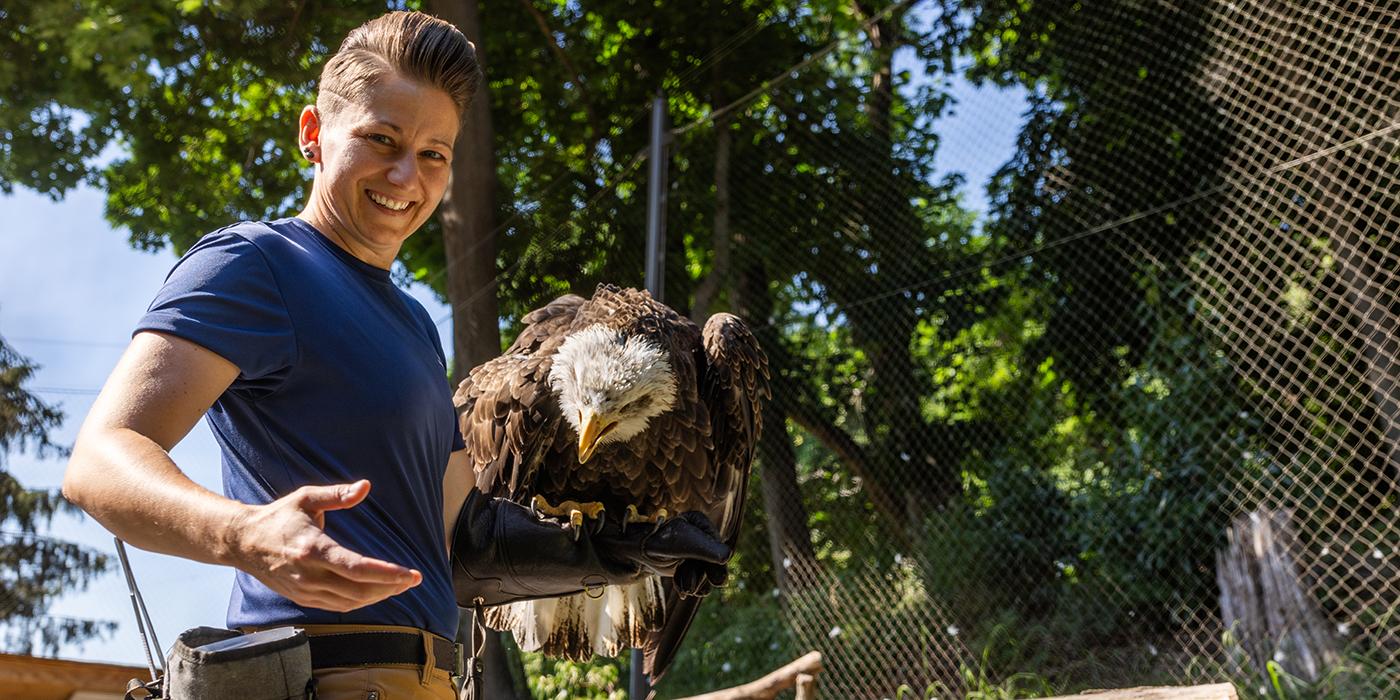
In honor of National Zookeeper Week, we're recognizing some of the dedicated professionals who go above and beyond for the animals in our care!
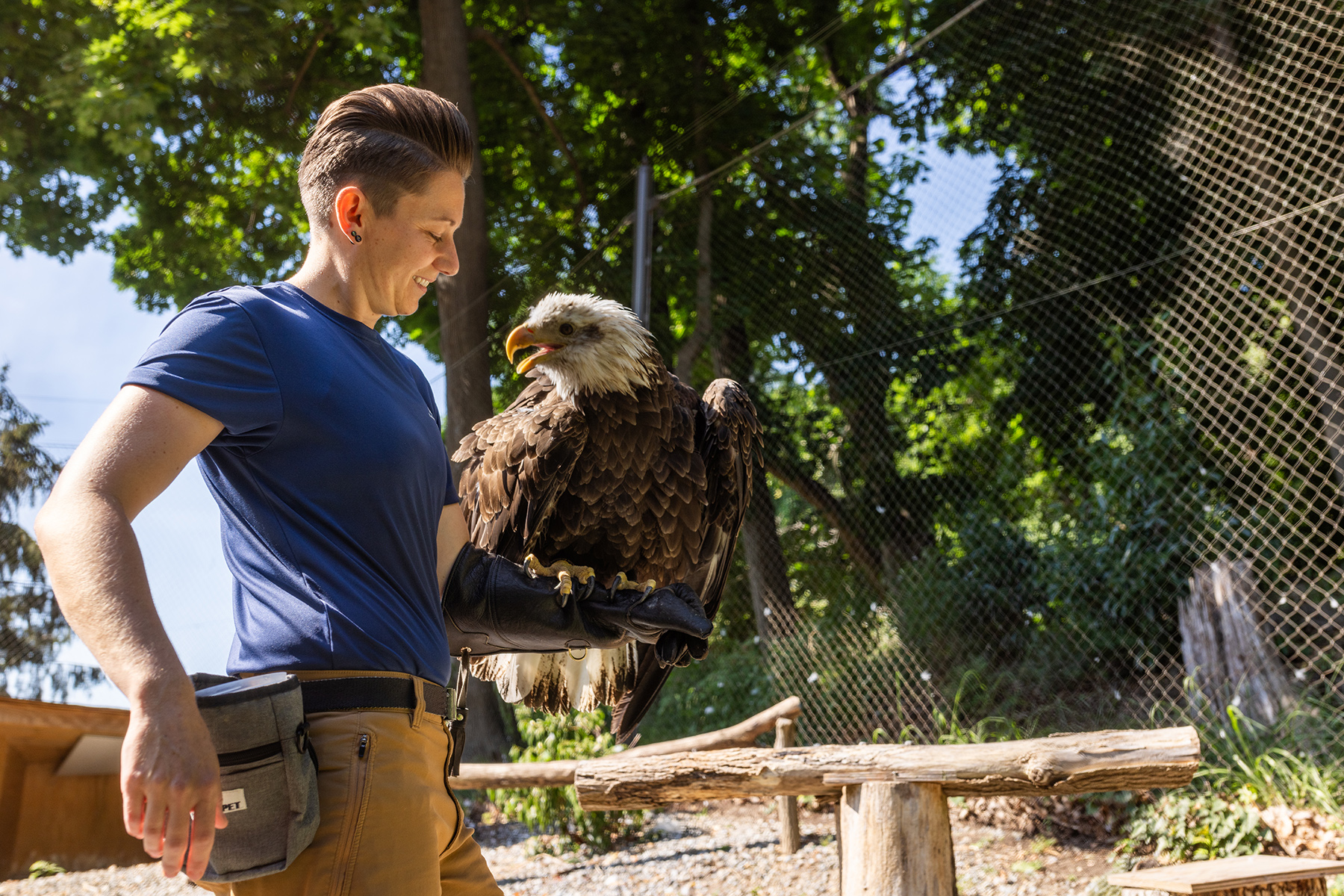
American Trail
“One of the goals we are working toward with our bald eagle, Acadia, is being able to take her out of the exhibit for educational demonstrations. Keeper Sam Milne took the lead in glove-training Acadia and uses positive reinforcement to reward her for calm behavior around the glove and for stepping on and off the glove when cued. Although Acadia is fitted with anklets, this training is completely voluntary. She has full choice over whether she participates.
“Giving animals choice and control is an important part of their welfare. Sam has been an expert at reading Acadia’s behavior and progressing the training according to her comfort level and pace. Acadia’s willingness to do this behavior voluntarily with Sam demonstrates the strong relationship between them.”—Rebecca Sturniolo, Curator of American Trail and Amazonia
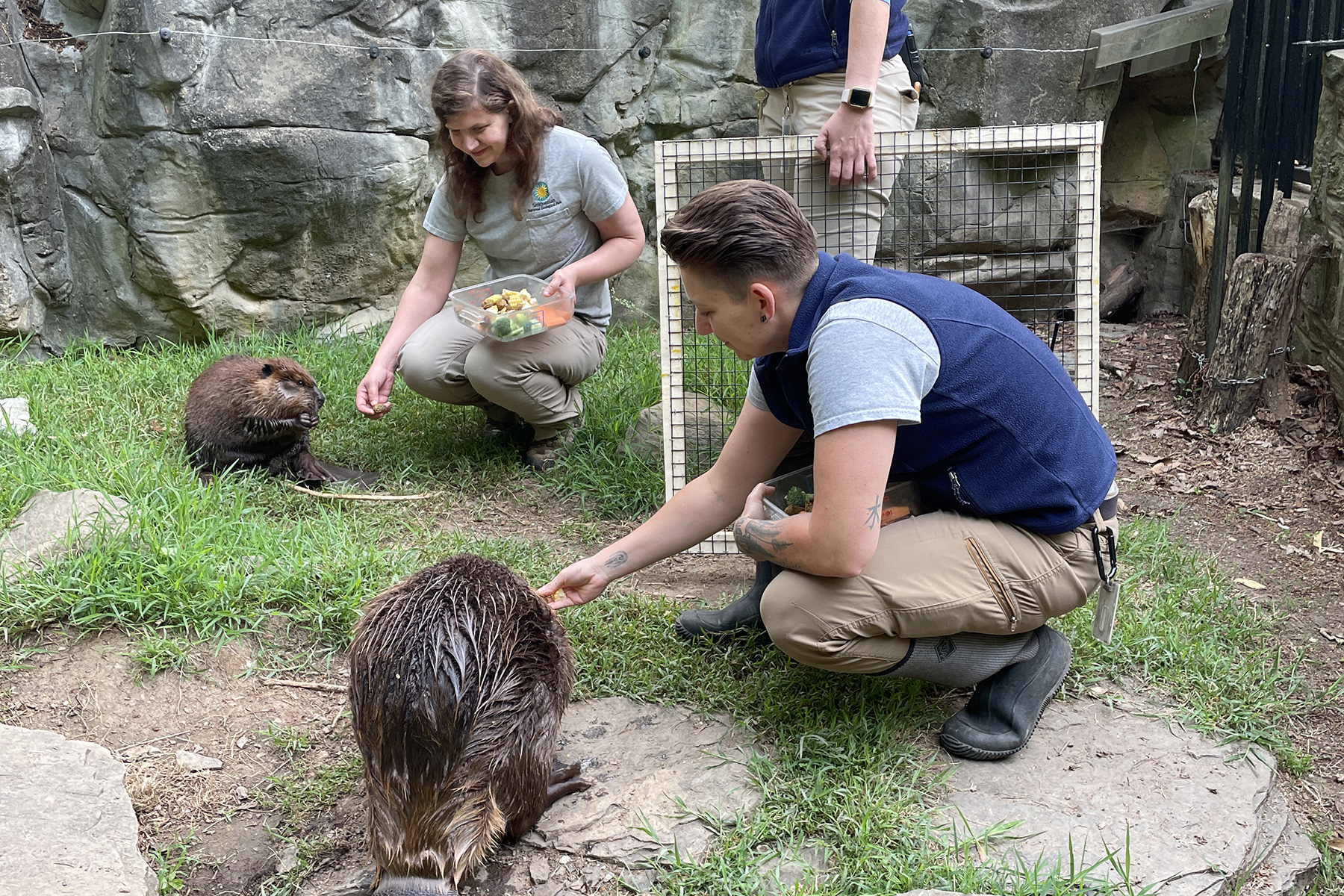
American Trail
“Introducing unrelated beavers to one another is notoriously difficult. Yet in the span of eight months, American Trail keepers Shannon Donndelinger, Sam Milne, Jackie Spicer, Diana Vogel, Erin Whatley and assistant curator Ashley Graham successfully introduced our pair, Aspen and Juniper.
“The team spent countless hours monitoring their behavior and modifying the habitat. They constructed “howdy” areas out of mesh, which gave Aspen and Juniper the chance to see, smell and interact with one another through a protective barrier. They tracked where and how the beavers spent their time in the exhibit, and conducted positive reinforcement training. Along the way, they discussed challenges, setbacks, accomplishments, and readjusted the plan based on the information they collected.
“Through incredible teamwork and dedication, in January 2024 keepers took down the physical barriers that separated the beavers. Juniper and Aspen began sharing the lodge, building together and grooming each other.”—Rebecca Sturniolo, Curator of American Trail and Amazonia
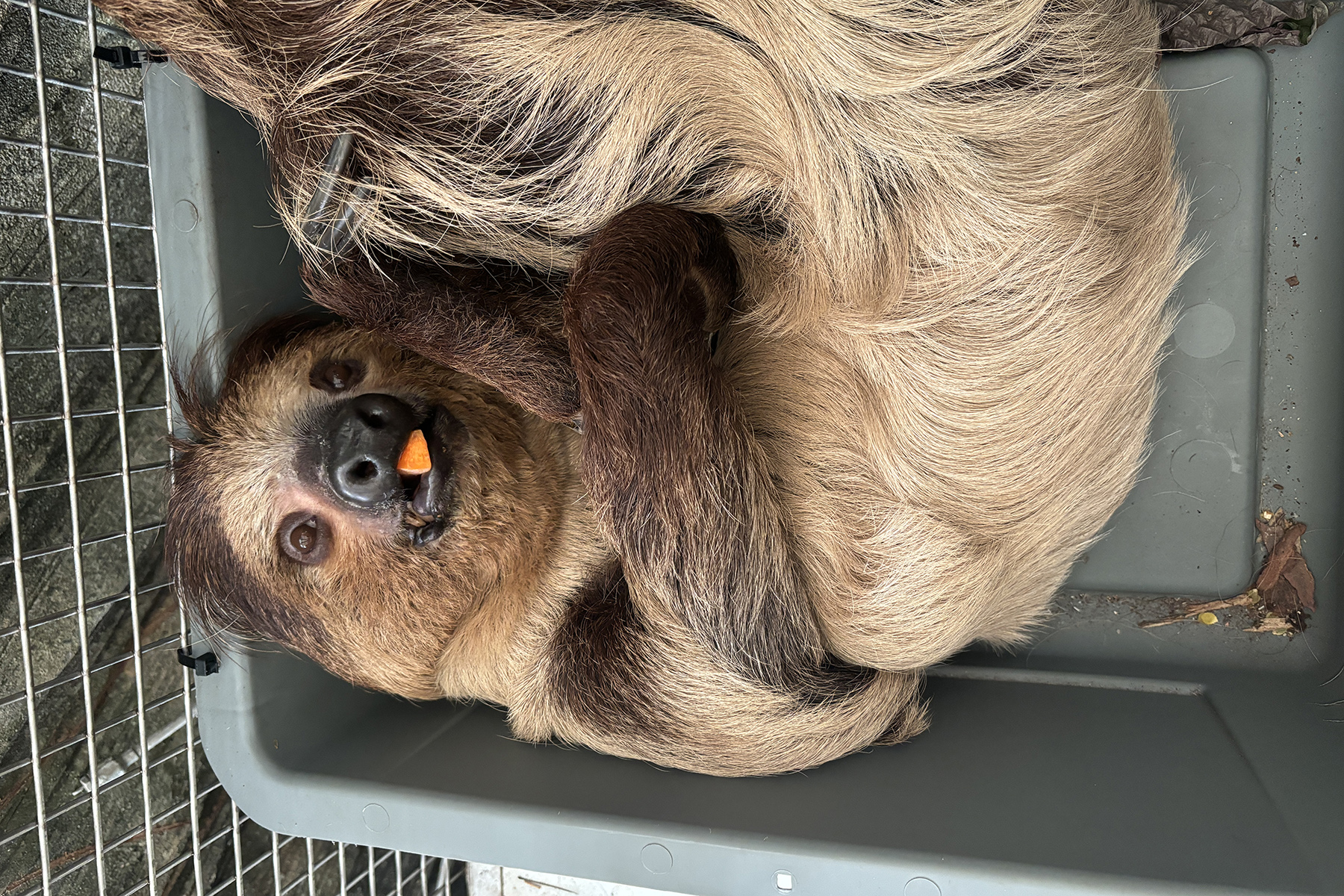
Amazonia
“Amazonia’s rainforest habitat is home to Howie, our southern two-toed sloth. Because he prefers to eat overnight, he can be difficult to monitor during the day. When Howie recently underwent a wellness exam, keepers Hilary Colton, Mike Kirby, Donna Stockton, Christina Castiglione and Thomas Wippenbeck took the opportunity to try to modify Howie’s feeding behavior.
“While Howie recovered from his exam, keepers placed him in an enclosure that gave them consistent access to him. Working together, they paired a sound cue to signal when Howie would be offered his diet for the day and hand-fed him to encourage a positive relationship.
“Once he was given access back into the rainforest, Howie returned to his old ways of only eating overnight. Although this outcome wasn’t what the team had hoped for, their collective effort, open-minded approach, and commitment to executing new strategies and training methods demonstrated their dedication to improving the welfare of the animals in their care. ”—Rebecca Sturniolo, Curator of American Trail and Amazonia
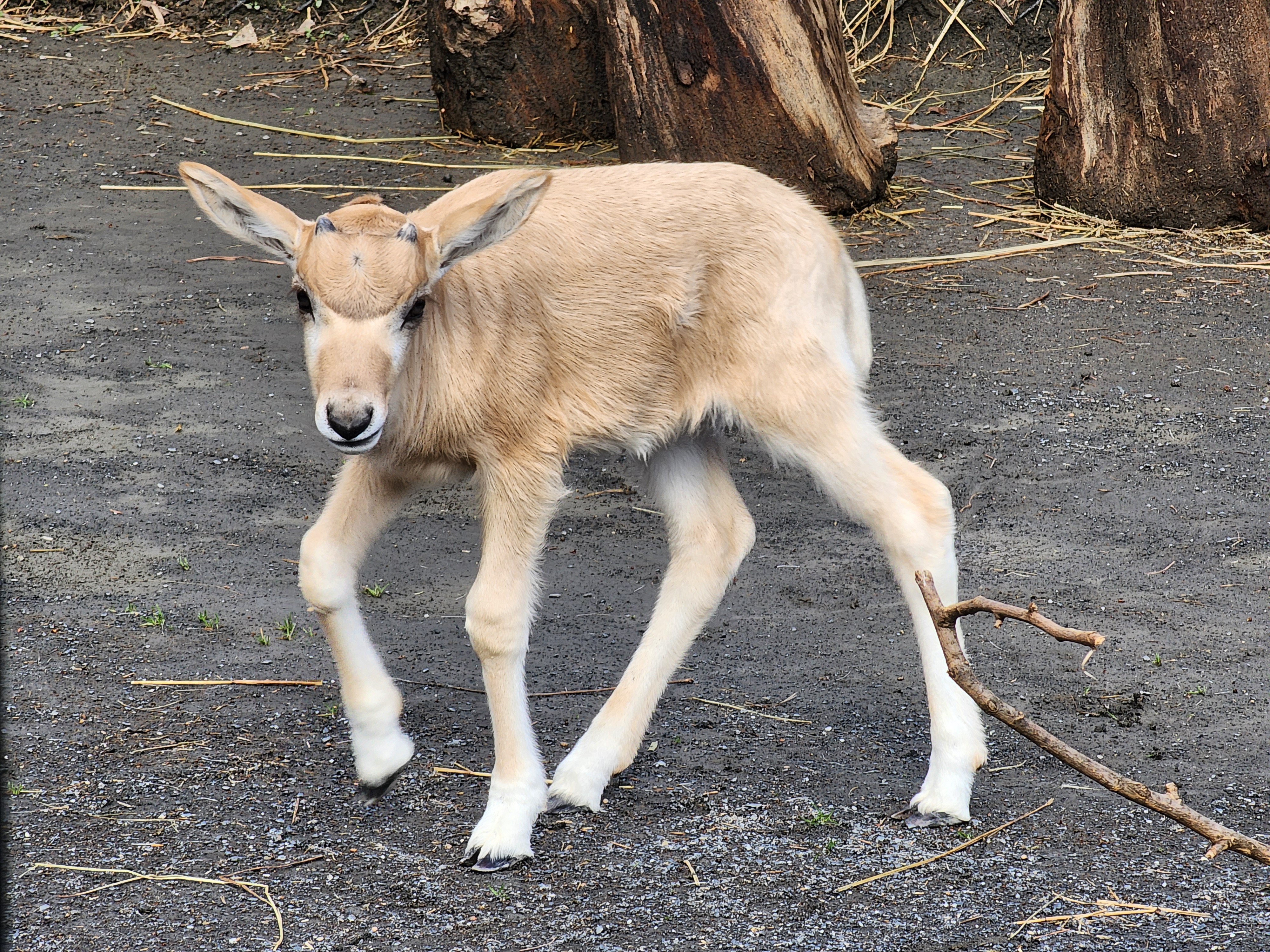
Africa Trail
In January, our Africa Trail team welcomed a female addax calf, born to mother Janet and father Jack. Keepers hope the calf will inspire visitors to care about her species, which is critically endangered. Only about 100 individuals remain in the Sahara desert due to drought, hunting and habitat loss from oil drilling and agricultural expansion. Come visit the family at Africa Trail!
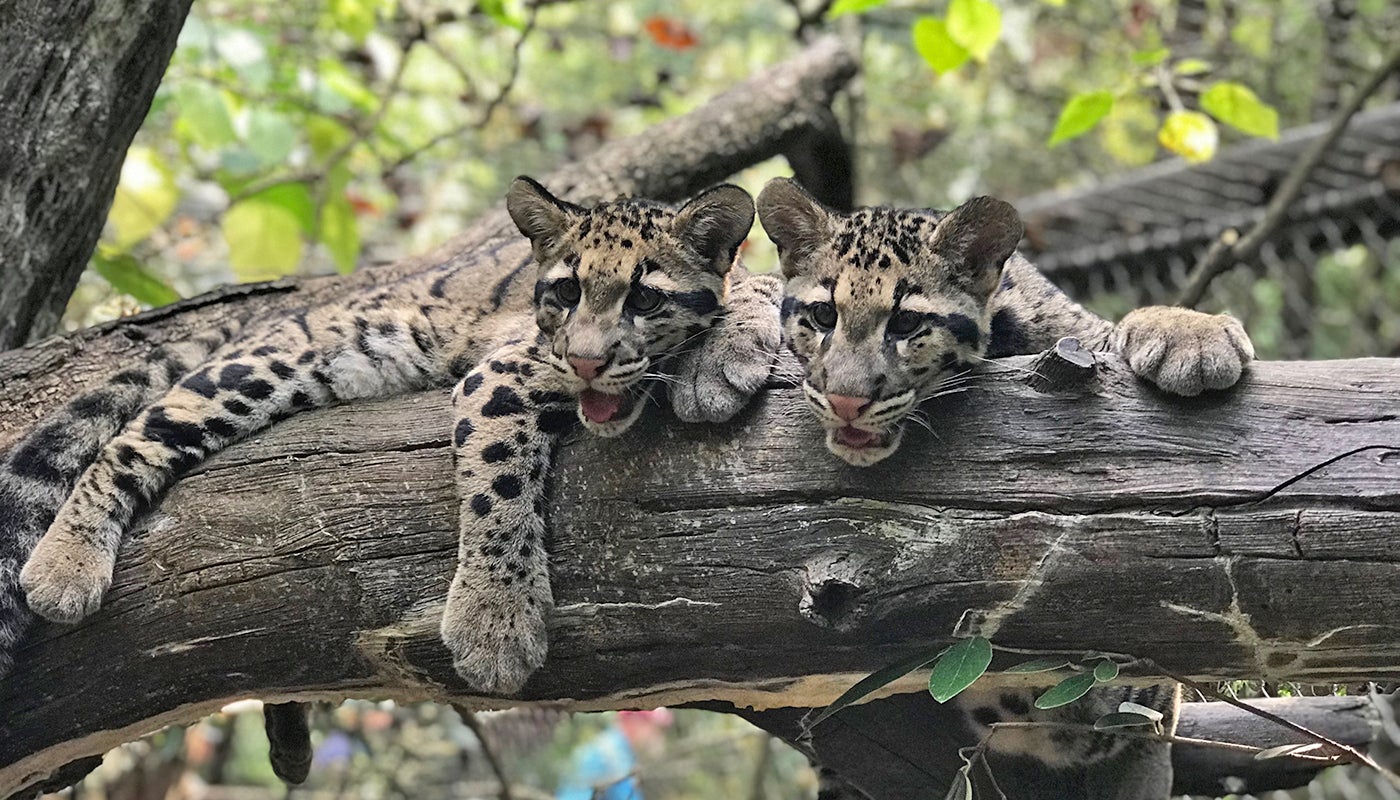
Asia Trail
“When our clouded leopards, Jilian and Paitoon, showed an interest in breeding, Asia Trail keeper Kaitlyn Adkins took the lead in tracking their behaviors. She updated the birth plan and communicated with the animal care team to ensure everyone was prepared for possible cub arrival. In addition, she worked extensively to train our female, Jilian, to voluntarily participate in ultrasounds, with the goal of enabling our staff to monitor a potential pregnancy.”—Michael Brown-Palsgrove, Curator of Asia Trail

Bird House
“The past year has been a period of excitement, growth and learning at the Bird House. After we opened the renovated exhibit in March 2023, we acclimated hundreds of birds to our brand new immersive aviaries and refreshed outdoor habitats—an enormous undertaking! The team’s unwavering commitment to each other enabled us to achieve notable success in conservation and animal husbandry.
“For our efforts to breed and care for North American songbirds, the team received a Plume Award from the Association of Zoos and Aquariums’ Avian Scientific Advisory Group in March 2024! Of the 15 species bred at our Bird House, five of them were ‘global firsts,’ including orchard orioles, black-and-white warblers, ovenbirds, Swainson’s thrush and yellow-breasted chats.
“In addition to their work behind-the-scenes, the team continues to teach visitors about the value of living a bird friendly lifestyle. By building on our achievements, addressing challenges, and embracing opportunities for growth and innovation, we are poised to continue making a positive impact on avian conservation and inspire generations to come. I’m immensely proud of the team and all that we have accomplished.”—Sara Hallager, Curator of Birds
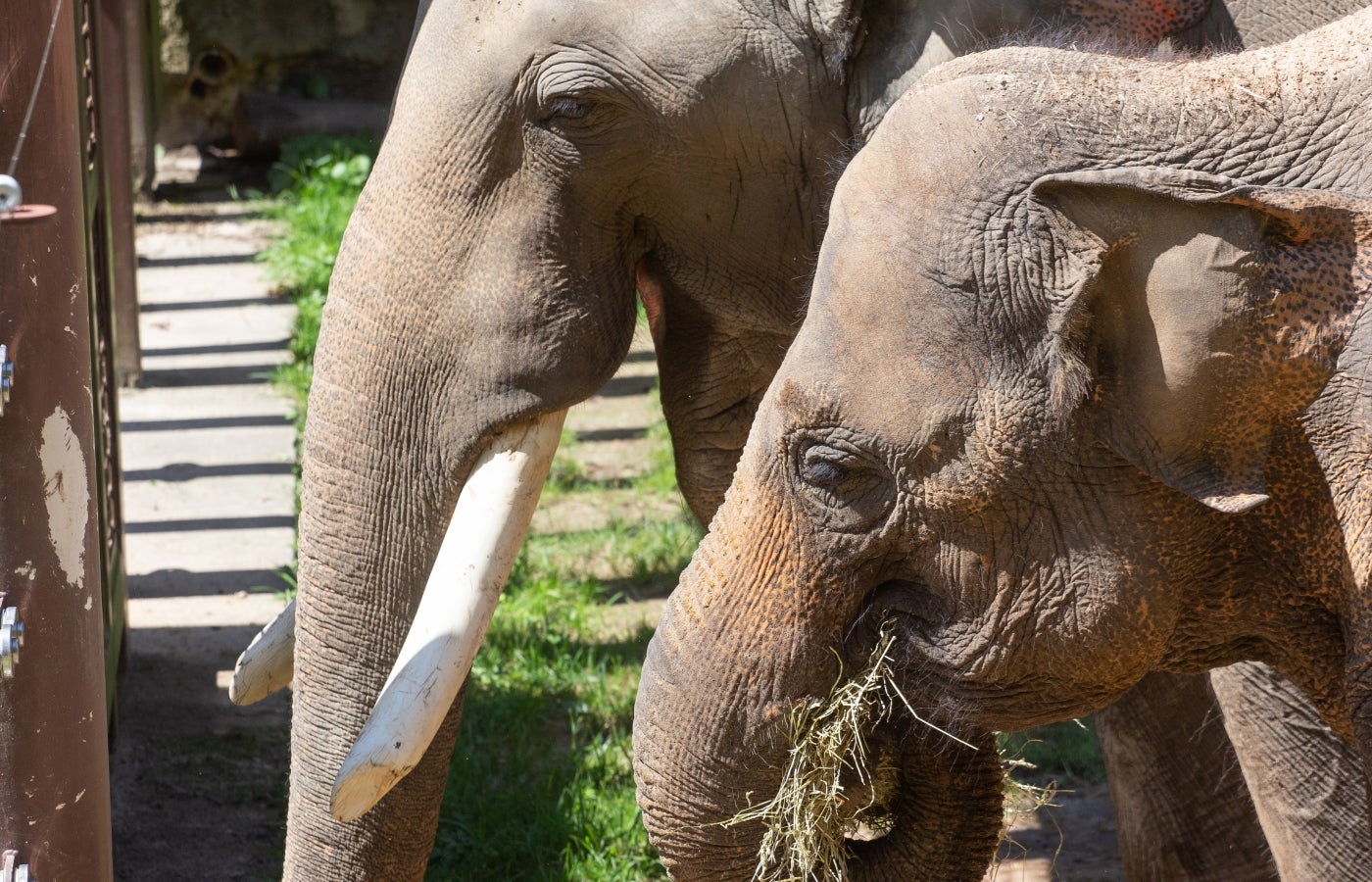
Elephant Trails
“A well-balanced diet and plenty of exercise are the keys to good elephant health. Hay feeders, situated at the far corners of the Elephant Trails habitat, encourage our elephants to both explore their surroundings and use their natural foraging behaviors. The elephants get good exercise as they traverse their habitat in search of food. Because the devices release the hay at random times, they add some excitement and unpredictability to the elephants’ foraging routine. Three keepers—Jason Gue, Becky Riley and Amanda Bobyak—have taken on the important duty of maintaining these automatic feeders. They’ve learned to repair, rebuild, program and rewire the devices so they are operational. Their efforts help ensure mealtimes are an enriching experience for our elephants.”—Tony Barthel, Senior Curator
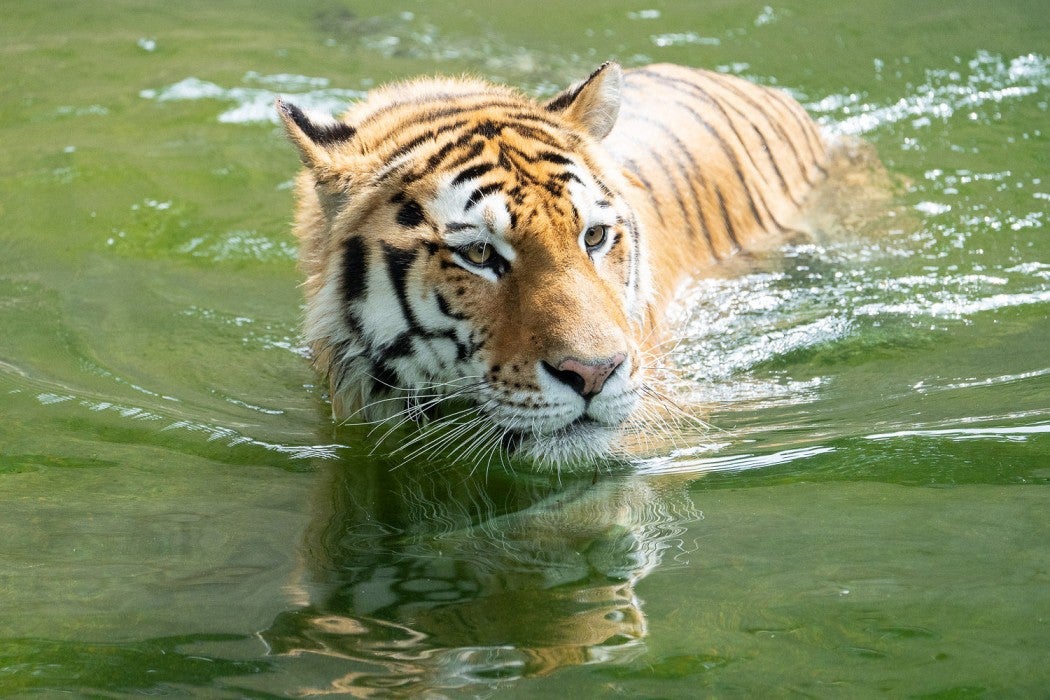
Great Cats
"Ever since he arrived at the Zoo a few years ago, our male Amur tiger, Métis, has had a laid-back, calm and relaxed personality. Unfortunately, he was often noted as being too laid back and at times lethargic and less food-motivated than we wanted to see. Great Cats keepers Dell Guglielmo and Charlie Shaw put their heads together to dissect Métis’s behavioral quirks and food preferences.
“To help increase Métis’s activity levels and interest in food, Dell took a scientific approach. By paying close attention to how much he consumed, she helped tailor his diet—ground horse meat, bones and frozen-thawed rabbits—in a way that was both nutritionally complete and appropriate relative to his body weight. After a few months, he lost 44 pounds and began acting more like a tiger—that is, excited to eat!
“With Métis’s newfound motivation, Charlie developed and implemented a training plan. Métis was much more willing to follow their cues and eager to receive his reward for doing the husbandry behaviors Charlie asked of him. Using this method, Métis voluntarily participated in injection training and successfully received his vaccines via hand injection! Dell and Charlie’s stepwise approach to problem-solving Métis’s lack of food-motivation demonstrates their excellent teamwork. To this day, he continues to participate in training with Great Cats keepers.” – Craig Saffoe, Curator of Great Cats, Kids’ Farm, Andean Bears and Claws & Paws Pathway
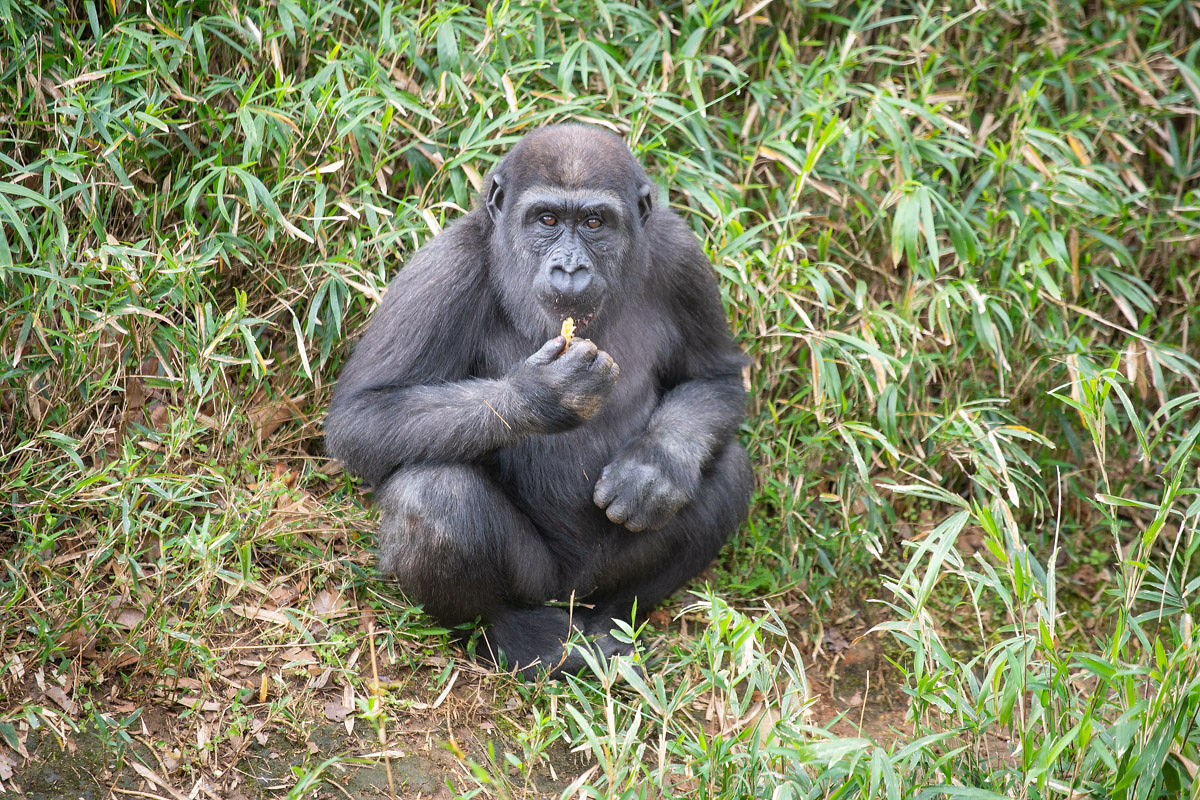
Department of Nutrition Sciences
“For over a decade, the Department of Nutrition Science has partnered with Ivymount School in Rockville, Maryland, to help create programs and partnerships for people in the neurodiverse community. Commissary keepers provide the students with a welcoming, structured and patient setting where they can gain experience and develop interpersonal skills. Our staff, along with Ivymount coaches, work one-on-one with students, ensuring they are comfortable with tasks and complete them correctly. In this way, Commissary keepers provide high-quality diets for the Zoo’s animals while contributing to the personal growth and education of these students. It’s a win-win partnership!” – Bill Clements, Commissary Manager
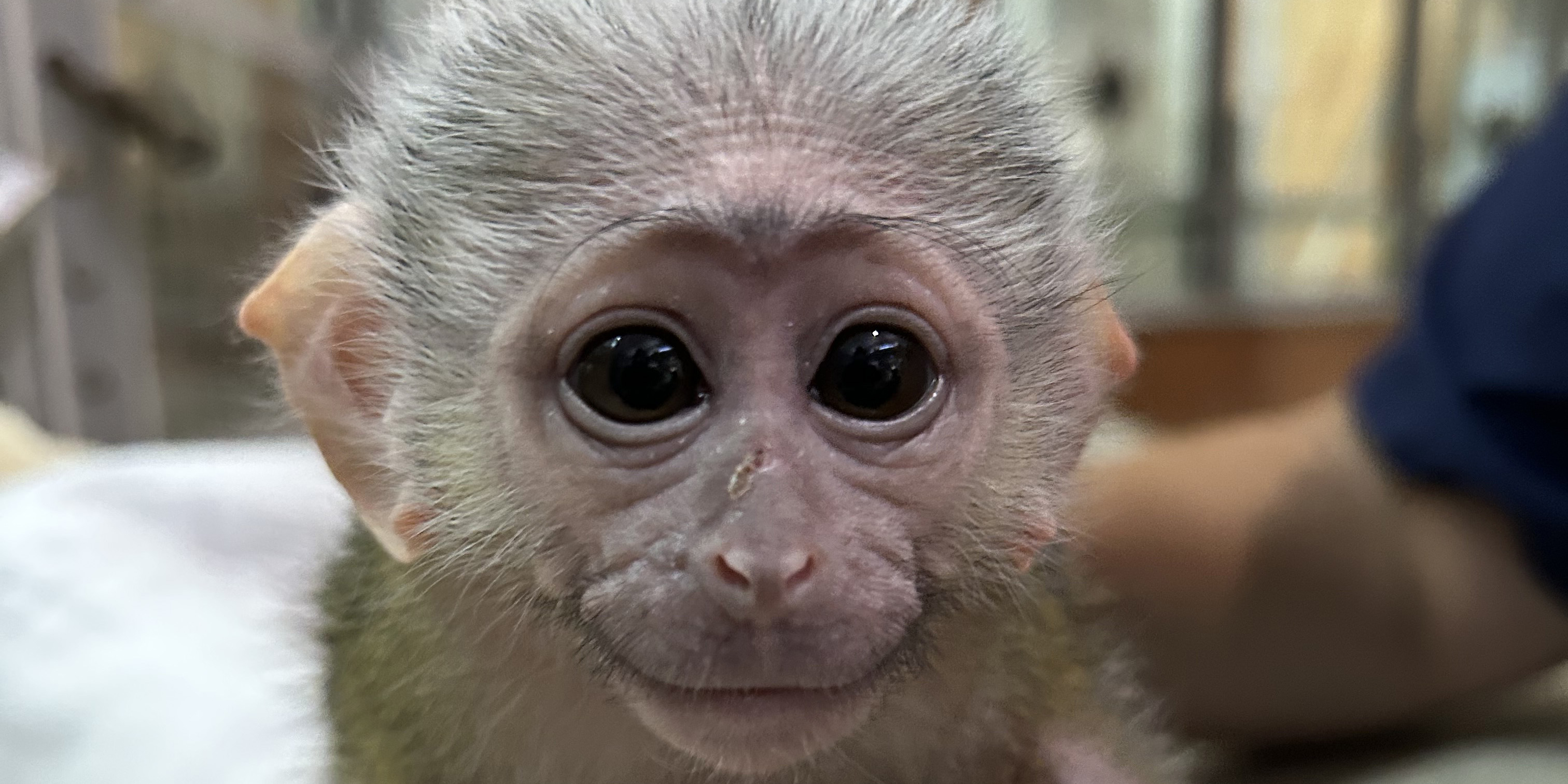
Primates
“When our Allen’s swamp monkey, Edgar, was born in August 2023, our goal was to support his mother, Zawadi, in raising him. Unfortunately, she did not display appropriate maternal care. To help Edgar survive, the Primate team—assistant curator Emily Bricker and keepers Erin Stromberg, Elliott Rosenthal, Carly Hornberger, Carolina Powell, Lynne McMahan, Francesca Bozzo, Hannah Wilson and Val Schultz—stepped up to hand-rear him.
“Along with animal care staff from across the Zoo—including members of the Asia Trail, American Trail, Small Mammal House, Department of Nutrition Science and Wildlife Health Sciences teams—we spent 24 hours a day for four months with Edgar. We fed him, taught him how to navigate his environment and, eventually, helped him fully integrate into the existing group of adult swamp monkeys (his mother, father and grandmother). The long hours and dedication from many people proved successful. Today, Edgar is healthy and a well-adjusted member of his troop!”—Becky Malinsky, Curator of Primates
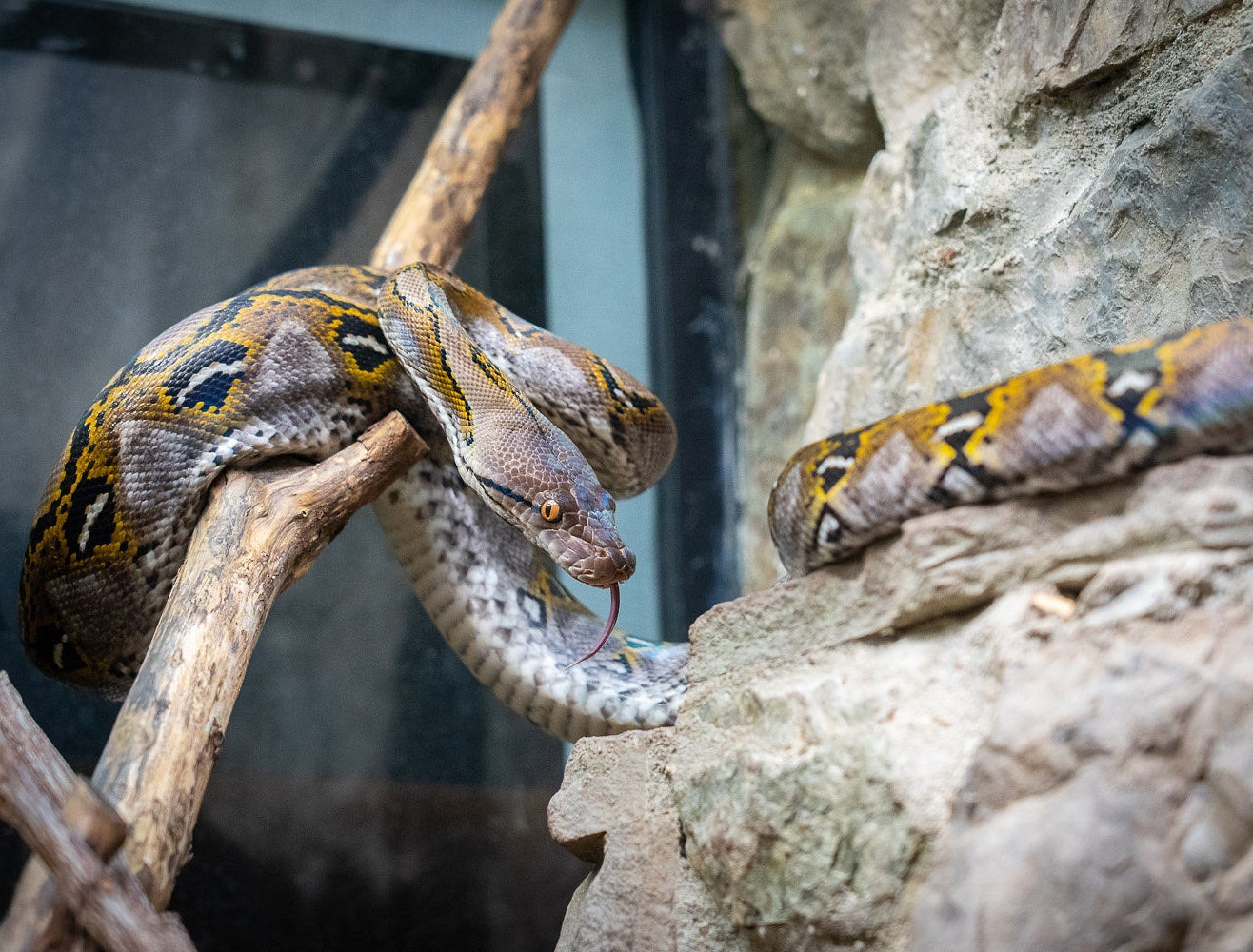
Reptile Discovery Center
“Built in 1931, the Reptile Discovery Center is one of the oldest buildings at the Zoo. Over the course of several months, our team—keepers Adam Freedman, Sara Hasenstab, Kyle Miller, Michael Miller and assistant curator Matt Evans—gave their blood, sweat and tears to revitalizing more than 32 exhibits in this historic facility. After removing the old exhibits, they created new habitats that were vibrant and enriching for our reptile and amphibian residents, not to mention eye-catching for our visitors. Plainly put, their efforts have made this building look and function better than it has in many decades.”—Alan Peters, Curator of Reptile Discovery Center
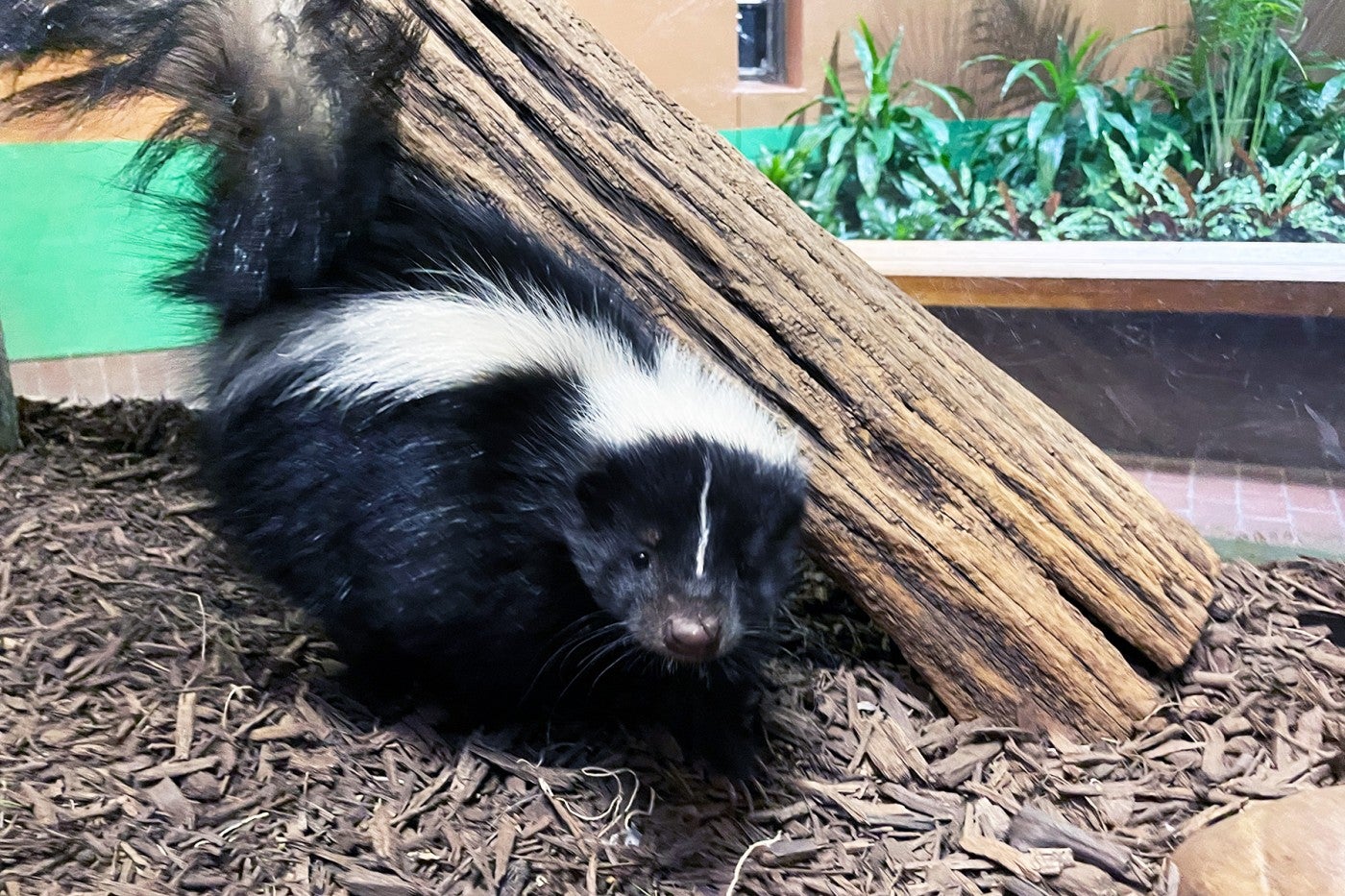
Small Mammal House
“Training animals to voluntarily participate in their own husbandry and medical care can help reduce their stress and increase resiliency. This past year, the Small Mammal House team—Kara Ingraham, Ann Gutowski, Chelia Chong, Maria Montgomery, Mimi Nowlin, Esther Wray and Sarah Rezac—made some great training breakthroughs.
“They worked with sand cat Desiree to calmly enter a box on cue, which enables us to safely transport her to the vet hospital for health exams. Our Przewalski’s horses, Olga and Dhalores, were trained to voluntarily receive their annual vaccines. Last but not least, keepers trained our young skunk, Sauerkraut, to enter a crate and step on a scale so we could routinely monitor his weight. With each of these success stories, keepers built a strong repertoire with our animals, desensitized them to new situations and offered positive reinforcement along the way.”—Kenton Kerns, Curator of Small Mammal House
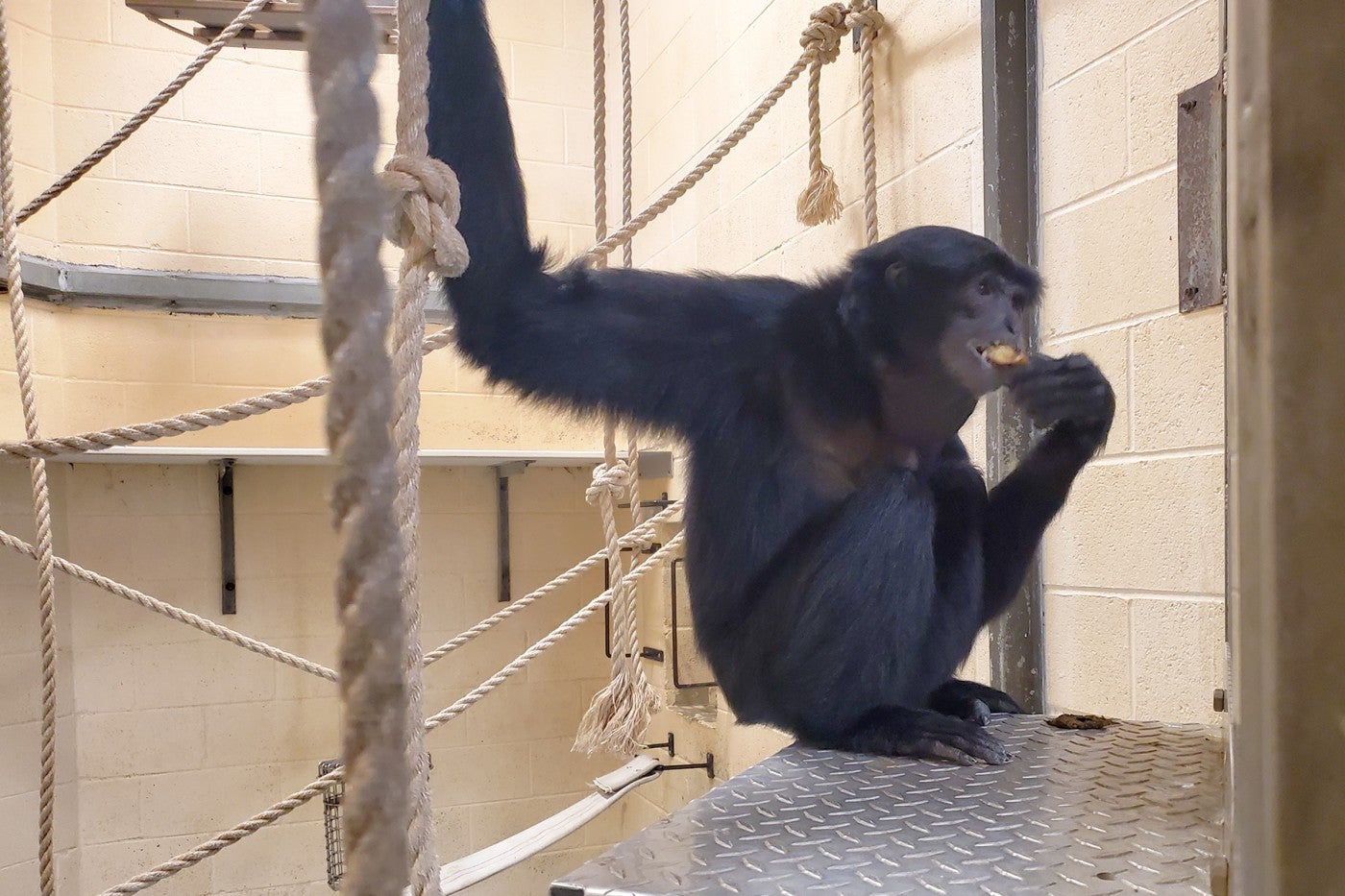
Wildlife Health Sciences
“While the indoor siamang facilities were under renovation in late winter and early spring, Wildlife Health Sciences keepers Sarah Napolitano and Erin Stewart cared for Bradley, Ronnie, Guntur and Adi at the vet hospital for about three weeks. Prior to the move, Sarah and Erin spent time with the Primate team and our siamangs and learned their daily routines.
“Together, the two teams built complex enclosures that helped maintain the siamangs’ positive welfare during the move. Once the apes arrived, Sarah and Erin worked diligently to maintain the medication schedules of our geriatric pair, Bradley and Ronnie. They also coordinated with Primate staff to ensure all of the siamangs kept up with their husbandry and medical training.
“This was a complex move for a challenging group of animals with many medical and behavioral enrichment requirements. Sarah and Erin did an excellent job maintaining their welfare and returning healthy siamangs back to the Primate team.”—Dr. Sarrah Kaye, Supervisory Veterinarian
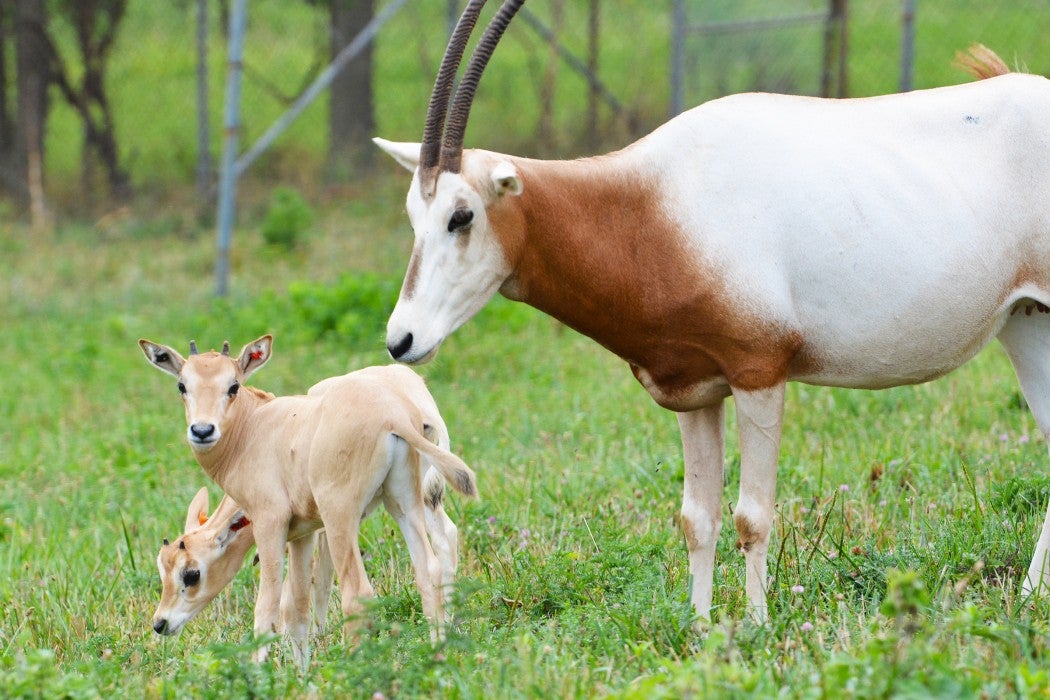
Smithsonian Conservation Biology Institute
“When the hoofstock team was short-staffed last September, keepers Tara Buk and Rel Harwood soldiered on with their duties, ensuring that each and every animal in our charge received excellent care. As our task list grew, we reached out to other teams for help. Our colleagues from the carnivore team—Ish Ganame and Marissa Gonzalez—stepped up to assist. Their willingness to jump in meant we could focus on our research and breeding programs. This year, we welcomed four healthy scimitar-horned oryx calves, completed a reproductive research trial with our Przewalski’s horses, and managed breeding with three of our equine species, per the recommendations of the Association of Zoos and Aquariums’ Species Survival Plan.”—Dolores Reed, Supervisory Biologist
